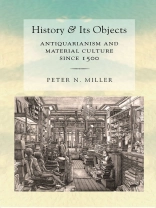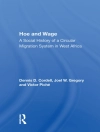Weaving together literary and scholarly insights, History and Its Objects will prove indispensable reading for historians and cultural historians, as well as anthropologists and archeologists worldwide. — Nathan Schlanger, École nationale des chartes, Paris
Cultural history is increasingly informed by the history of material culture—the ways in which individuals or entire societies create and relate to objects both mundane and extraordinary—rather than on textual evidence alone. Books such as The Hare with Amber Eyes and A History of the World in 100 Objects indicate the growing popularity of this way of understanding the past. In History and Its Objects , Peter N. Miller uncovers the forgotten origins of our fascination with exploring the past through its artifacts by highlighting the role of antiquarianism—a pursuit ignored and derided by modem academic history—in grasping the significance of material culture.
From the efforts of Renaissance antiquarians, who reconstructed life in the ancient world from coins, inscriptions, seals, and other detritus, to amateur historians in the nineteenth century working within burgeoning national traditions, Miller connects collecting—whether by individuals or institutions—to the professionalization of the historical profession, one which came to regard its progenitors with skepticism and disdain. The struggle to articulate the value of objects as historical evidence, then, lies at the heart both of academic history-writing and of the popular engagement with things.
Ultimately, this book demonstrates that our current preoccupation with objects is far from novel and reflects a human need to reexperience the past as a physical presence.
İçerik tablosu
Introduction: Why Historiography Matters1. History and Things in the Twentieth Century2. Karl Lamprecht and the ‘Material Turn’ c. 18853. Things as Historical Evidence in the Late Renaissance and Early Enlightenment4. Material Evidence in the History Curriculum in Eighteenth-Century Göttingen5. Archaeology as a Way of Talking about Things, 1750–18506. Material Culture in the Amateur Historical Associations of Early Nineteenth-Century Germany7. Gustav Klemm, Cultural History, and Kulturwissenschaft8. The Germanisches Nationalmuseum: Antiquitates and Cultural History in the Museum Conclusion: Toward a Future Theory of the Historical Document
Yazar hakkında
Peter N. Miller is Dean and Professor at Bard Graduate Center. He is the author most recently of Peiresc’s Mediterranean World, editor of Cultural Histories of the Material World, and coeditor of Antiquarianism and Intellectual Life in Europe and China, 1500–1800.












